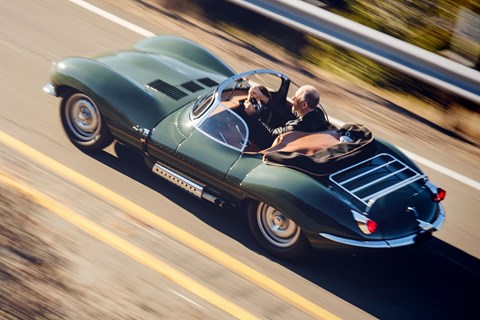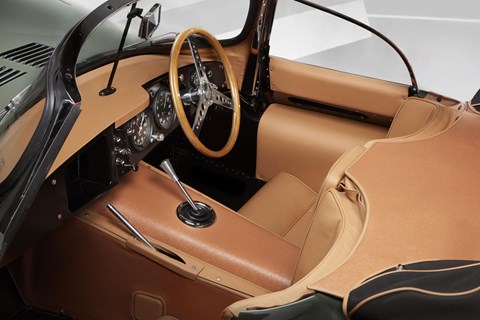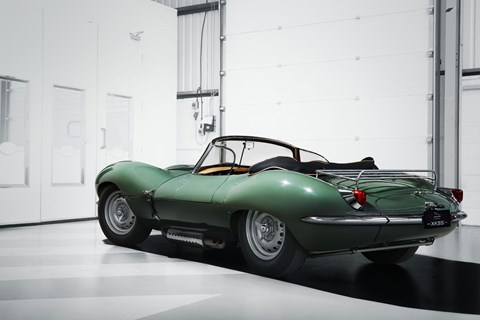► XKSS production restarts, 59 years on
► Road-legal version of the D-type racer
► Nine cars to be built, each costs £1m+
Jaguar has unveiled the first of its new limited run of lairy motorsport-derived sports cars – from 1957. The company’s Jaguar Classic division is building nine exact replicas of the Jaguar XKSS, the rare road-going version of the D-type Le Mans racer, with deliveries starting in 2017.
It’s a project in the same vein as the six Lightweight E-types built by Jaguar from 2014, using uncompleted chassis numbers originally allocated in 1963. There’s a similar back story here: originally 25 D-type racers were planned to be converted to XKSS road cars in 1957, but only 16 were completed before a fire gutted much of Jaguar’s Browns Lane factory later that year.
Now Jaguar is finishing the job, 59 years later. The nine new XKSS cars will be built as closely as exactly as possible to the same specification as the 1957 originals, and sold to a select group of collectors and Jaguar customers. The price? A shade over £1 million.
Remind what the Jaguar XKSS was all about
One of the hairiest road cars ever created, the XKSS was a mildly civilised version of the D-type racing car, built to celebrate Jaguar’s hat-trick of Le Mans wins from 1955 to 1957.

Among other changes, a higher windscreen replaced the D-type’s aero shield, an extra door was added so passengers could actually get in and out, and the race car’s famed tailfin was swapped for a chromed luggage rack – ideal for picnics.
Actor Steve McQueen owned one, and regularly charged around Los Angeles in it between pictures. Today that particular car’s estimated to be worth more than £20m.
Where are the ‘new’ Jaguar XKSS models being built?
At Jaguar’s recently established ‘Experimental Shop’ in Warwick, using the same techniques as the Lightweight E-type continuation cars (which included digitally scanning an original car’s monocoque and hand-rolling the body panels) – but the first of the cars was publicly unveiled this week, at the Petersen museum in Los Angeles.

‘Jaguar Classic’s highly skilled team of engineers and technicians will draw on decades of knowledge to ensure each of the nine cars is completely authentic and crafted to the highest quality,’ says Tim Hannig, director of Jaguar Land Rover’s Classic division.
The ‘new original’ Jaguars are claimed to be nigh-on perfect recreations, featuring period Dunlop disck brakes, Dunlop tyres, two-piece magnesium wheels, a 262bhp 3.4-litre D-type engine and Weber DC03 carburettors. In excess of 10,000 man hours is reputed to go into each car, helping justify the substantial price tag.
Only a few upgrades have been made, primarily to improve safety. For example, the fuel cell is made of modern materials to improve its durability.

Kev Riches, Jaguar Classic Engineering Manager, said: ‘The XKSS is one of the most important cars in Jaguar’s history, and we are committed to making the new version absolutely faithful to the period car in every way. From the number, type and position of all the rivets used – there are more than 2,000 in total – to the Smiths gauges on the dashboard, everything is the same as the original cars, because that is the way it should be.’
First deliveries to the lucky nine customers start in early 2017.
CAR magazine drove Jaguar’s modern-day Lightweight E-type continuation at Spain’s Circuit de Navarra in the September 2015 issue – click here to read the feature in full